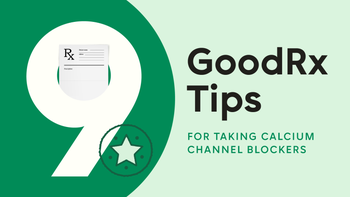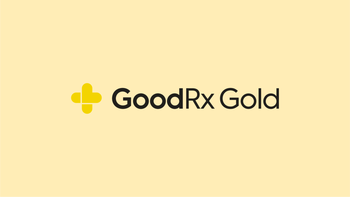
How Much Is Amlodipine Without Insurance?
Key takeaways:
Amlodipine (Norvasc, Katerzia, Norliqva) is a medication that’s FDA approved to treat high blood pressure. It’s also used to treat coronary artery disease and certain types of angina.
Without insurance, 30 tablets of 5 mg amlodipine cost an average of $27.08. You could pay as little as $5.40 for 30 tablets of 5 mg amlodipine with a GoodRx coupon at certain pharmacies.
Many insurance plans cover amlodipine, but a small percentage of Affordable Care Act plans require prior authorization.
Access savings on related medications
Table of contents

Amlodipine (Norvasc, Katerzia, Norliqva) is a popular calcium channel blocker that’s FDA approved to treat hypertension (high blood pressure). The medication is also used to treat coronary artery disease and certain types of angina (chest pain).
Amlodipine comes as an oral tablet, an oral solution, and a liquid suspension, and it’s typically taken once a day. However, your prescribed dosage depends on your health condition, age, and any other medications you’re taking. Adults typically start with 5 mg once daily. If a higher daily dose is needed, your healthcare professional may gradually increase it up to a maximum of 10 mg per day. The 10 mg daily dose is more commonly used for coronary artery disease.
How much you’ll pay for amlodipine depends on factors such as your dosage, your pharmacy, and whether you're getting a brand-name or generic version. Most health insurance plans cover amlodipine, but if you're paying out of pocket, coupons from GoodRx may be able to help you save money. Even if you have insurance, GoodRx prices may be lower than your copay, so it’s a good idea to check for savings.
Search and compare options
How much does amlodipine cost?
Without insurance, the average cash price for 30 tablets of 5 mg amlodipine is $27.08. For the same quantity of 10 mg amlodipine, you can expect to pay around $26.53 on average.
The cost of your amlodipine prescription is based on several factors, including:
Your location
The pharmacy you choose
Your prescribed dose, form, and quantity
The availability of discounts, coupons, or insurance coverage
Whether you choose a brand-name or generic version
The table below shows the average retail price for 30 tablets of amlodipine at different doses. Tablet doses range from 2.5 mg to 10 mg. It also includes prices for 1 bottle of the oral solution (brand-name Norliqva) and the liquid suspension (brand-name Katerzia).
Medication | Quantity and form | Dose | Average retail price |
|---|---|---|---|
Amlodipine (generic) | 30 tablets | 2.5 mg | |
Amlodipine (generic) | 30 tablets | 5 mg | |
Amlodipine (generic) | 30 tablets | 10 mg | |
Norliqva (brand-name medication) | 1 bottle (150 mL) of oral solution | 1 mg/mL | |
Katerzia (brand-name medication) | 1 bottle (150 mL) of liquid suspension | 1 mg/mL |
Does insurance cover amlodipine?
Amlodipine is widely covered by insurance plans, including Medicare and Medicaid. Medicare plans typically cover the medication without restrictions, while about 2% of Affordable Care Act (ACA) plans require prior authorization for amlodipine.
Before filling your prescription, check your plan’s formulary (list of covered medications) and summary of benefits. This will help you understand:
Whether amlodipine is covered under your plan
Your potential out-of-pocket costs, such as copays or coinsurance
Any potential restrictions, such as quantity limits or prior authorization requirements, you’ll face
How different insurance plans cover amlodipine
The following table shows the likelihood of having coverage, as well as prior authorization and step therapy requirements, for amlodipine with different types of insurance plans.
Insurance Coverage for Amlodipine
Insurance type | Enrollees covered for amlodipine | Enrollees required to get a prior authorization | Enrollees required to do step therapy |
|---|---|---|---|
99.8% | 2.3% | 0% | |
Commercial (not including ACA plans) | 99.4% | 0.8% | 0% |
Medicare, including original Medicare and Medicare Advantage plans | 100% | 0% | 0% |
Medicaid, including state-run and managed care plans | 100% | 0.6% | 0% |
Source: Managed Markets Insight & Technology, LLC™, as of January 6, 2025. (See methodology below.)
If your insurance doesn't cover amlodipine, try one or more of the following steps:
Ask about alternative medications that can treat your condition and might be covered by your insurance, such as hydrochlorothiazide (Microzide) for high blood pressure.
Request a formulary exception from your insurance company to get coverage for amlodipine.
File an appeal if your exception request is denied.
Review your insurance options during open enrollment to find a plan with prescription medication coverage that better fits your needs.
Ways to save on prescription medications: From using a GoodRx coupon to qualifying for a manufacturer copay savings card, here are some ways to save on prescription medications like amlodipine (Norvasc).
What should you expect when taking amlodipine? Read firsthand accounts from people who have taken amlodipine.
Common amlodipine side effects: Learn about the most common amlodipine side effects and when you should contact your prescriber.
Ways to save on amlodipine
Here are five ways to save money on amlodipine, whether or not you have insurance coverage.
1. Use a GoodRx coupon
GoodRx provides free coupons that could help you reduce the cost of your amlodipine prescription. Many pharmacies accept GoodRx coupons, and you can go to www.goodrx.com or download the GoodRx app to compare prices at different locations.
Here’s an example of what you might pay for different doses of amlodipine and for Norliqva and Katerzia with a GoodRx coupon.
Medication | Quantity and form | Dose | Price with a GoodRx coupon |
|---|---|---|---|
Amlodipine (generic) | 30 tablets | 2.5 mg | |
Amlodipine (generic) | 30 tablets | 5 mg | |
Amlodipine (generic) | 30 tablets | 10 mg | |
Norliqva (brand-name medication) | 1 bottle (150 mL) of oral solution | 1 mg/mL | |
Katerzia (brand-name medication) | 1 bottle of (150 mL) liquid suspension | 1 mg/mL |
2. Get a copay savings card
If you have insurance that is provided through your employer or directly purchased by you, or if you are uninsured, you may qualify for a copay savings card. Norvasc’s savings card helps eligible individuals pay as little as $0 per monthly prescription fill of the brand-name medication. The savings offer is limited to up to $75 per fill, and a maximum of $900 per year. Check to see if you meet eligibility requirements for this offer.
Katerzia’s copay savings card allows eligible individuals to pay as little as $30 per prescription. Also, CMP Pharma’s EasyPay Copay Program offers savings on Norliqva. If you qualify, you may pay as little as $0 per prescription.
3. Look into a patient assistance program
If you can’t afford your medication, you may be eligible for a patient assistance program. Patient assistance programs usually provide medication to qualifying consumers at no cost. Check to see if you’re eligible for Katerzia’s patient assistance program to help you save on the brand-name medication.
4. Ask for a 90-day prescription
Switching to a 90-day prescription of amlodipine could help lower your costs. Many insurance plans offer reduced copays for 3-month supplies, and some pharmacies may provide bulk discounts. Talk to your prescriber and pharmacist to see if this option is available to you.
5. Tap into your HSA or FSA funds
With a health savings account (HSA) or flexible spending account (FSA), you can use pretax funds to pay for prescription medications like amlodipine. FSA funds expire after a set deadline, while unused HSA funds roll over every year. That means you can use the dollars in an HSA to pay for future medication purchases and other qualified health expenses.
The bottom line
Without insurance, 30 tablets of 5 mg amlodipine cost an average of $27.08. But you could pay as little as $5.40 at certain pharmacies with a GoodRx coupon.
The exact price you’ll pay for amlodipine depends on various factors, like your pharmacy, if you qualify for a copay savings card or patient assistance program, and your dosage.
Why trust our experts?


Methodology
We obtained national prescription coverage data for each medication from Managed Markets Insight & Technology (MMIT). The data reflects health insurance coverage as of January 2025.
We calculated the percentage of enrollees in plans that cover each medication by dividing the number of enrollees covered for the medication within a specific insurance channel (e.g., ACA, Medicare, Medicaid) by the total number of enrollees in all plans within that channel.
We determined the percentage of enrollees in plans with a prior authorization requirement by calculating the proportion of enrollees in plans that required prior authorization for the medication within each channel.
Finally, we measured the percentage of enrollees in plans with a step therapy requirement by calculating the proportion of enrollees in plans that imposed step therapy requirements for the medication in each channel.
These estimates, derived from national MMIT coverage data, provide insight into health insurance coverage for each medication. They take into account restrictions such as prior authorization, step therapy, and quantity limits. The percentages are expressed relative to the total number of enrollees covered by various insurance channels, including ACA plans, commercial (excluding ACA) plans, Medicare, and Medicaid (both state-run and managed care plans).
References
Azurity Pharmaceuticals. (n.d.). Katerzia.
HealthCare.gov. (n.d.). Appealing a health plan decision.
Medicaid.gov. (n.d.). Managed care.
Was this page helpful?
Related Articles
Browse medications
View AllResearch prescriptions and over-the-counter medications from A to Z, compare drug prices, and start saving.




























